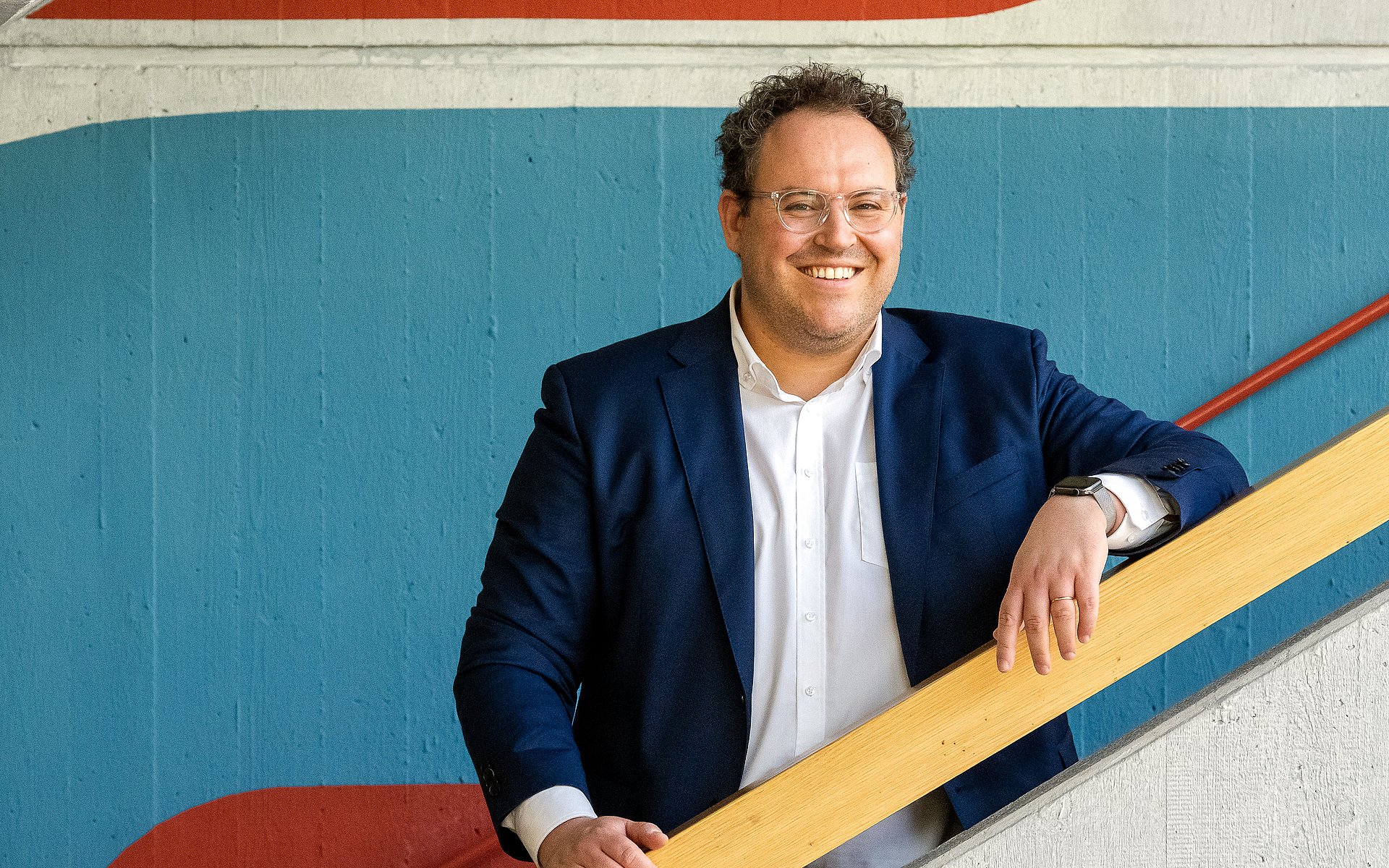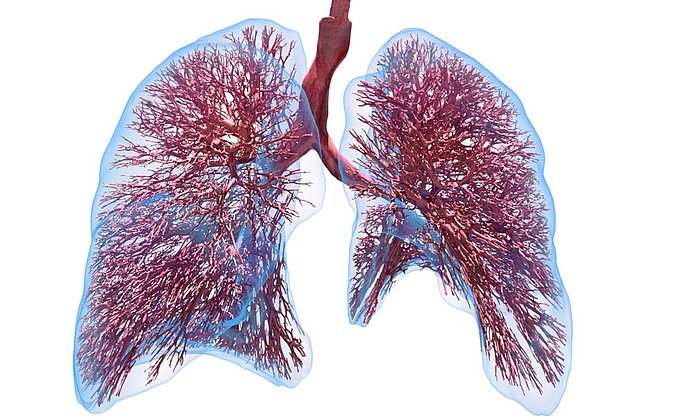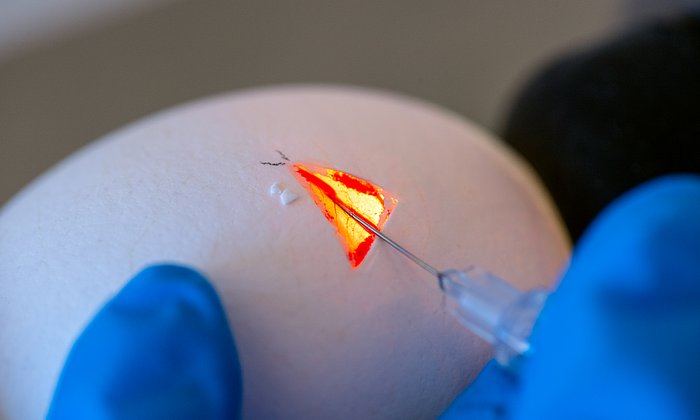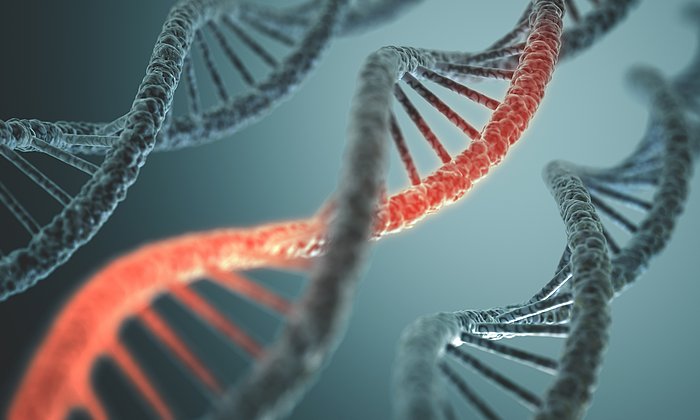NewIn: Julian Grünewald
Curing heart disease with CRISPR
Physician-scientist Julian Grünewald hopes to cure heart disease using targeted gene modifications. To this end, he is advancing the development of the CRISPR-Cas system, also known as "gene scissors." Since its discovery as a gene-editing tool ten years ago, CRISPR has played a crucial role in biotechnology. Three years ago, the Nobel Prize in Chemistry was awarded for this discovery. CRISPR-Cas systems allow genes to be targeted and modified more readily and faster than was possible using previous methods.
Professor Grünewald, what is the focus of your research?
I intend to use the latest CRISPR methods to develop creative, efficient and safe therapeutic approaches to treat heart disease. To this end, I work with different CRISPR-Cas systems for gene editing. Gene editors are tiny molecular machines for the targeted alteration of DNA sequences. I plan on adapting gene editors for use in heart cells, developing new editors and making them more efficient and safer.
How does gene editing with CRISPR work in simple terms?
CRISPR can be used to precisely modify specific sites in defective genes. It can also be used to switch individual genes on or off. To modify, insert or remove DNA building blocks at a specific location, the gene editor must first be positioned at the right spot on the DNA, where it makes a cut with pinpoint accuracy. The cell then repairs the cleaved DNA itself. It is the cell that does the actual editing. The editing result can thus also depend on the cell type and tissue.
Furthermore, the technology is constantly being advanced. Newer CRISPR-based methods that I primarily work with are base editing and prime editing. These methods allow for even more precise editing. Instead of introducing the usual DNA double-strand break, they cut only one DNA strand, which is less invasive and often easier on the cells. On the other hand, these editors are more complicated to program and are also significantly larger, making it more difficult to deliver them to the target tissue.
The more diverse the minds and ways of thinking, the better the research becomes
What do you like most about your work?
Tinkering with DNA and proteins as well as discovering and developing something completely novel is indescribable. In gene editing, we specifically change individual bases of the DNA. There are several important steps in the process. You need to move the tiny molecular machines into the cells and direct them to exactly the right spot within a genome comprising roughly three billion base pairs. After a few days, the DNA can be extracted from the cells and evaluated. You can only see whether it has worked at the very end. It is fascinating every time you recognize that a DNA sequence was indeed precisely altered!
What I also really like about the job is working with enthusiastic scientists from different countries and backgrounds. The more diverse the minds and ways of thinking, the better the research becomes. After a few months of training in the lab, even absolute CRISPR novices become independent and develop their own ideas and solutions. Seeing this development is among the most beautiful moments.
During your studies and scientific research, you passed many stations including Freiburg, Salamanca, Paris, New York, and Boston. What did you take away from that?
Day to day life is a bit different everywhere, whether you're reading the newspaper in the morning in a Paris café or having a late dinner in a relaxed atmosphere in Spain. I learned a lot in Spain and France, especially in my university studies and clinical training.
I find it particularly inspiring how different countries and cultures approach topics differently. At the end of the day, we are concerned about and occupied with the same problems everywhere – but the approach to solutions is different. When it comes to science and innovation, the United States, and Massachusetts in particular, are an inspiration to me. Their positive, pragmatic approach and the open-minded attitude towards science and progress – It’s a good approach, I think. At TUM, you can also feel a pioneering spirit of optimism – that's exactly why I wanted to come here.
In the lab in Boston, I particularly liked the enthusiasm and team spirit that everyone showed while working on new methods of gene editing – always with an eye on developing new therapies. And the way in which scientific rigor can be combined with creativity and engineering – all in an international, diverse and harmonious environment. I would like to create this kind of environment here in Munich, too.
What are the challenges in your work?
Targeting genes in heart muscle cells to cure disease is difficult for a number of reasons. To begin with, it's not easy to get the CRISPR machinery into the heart itself in the first place. In addition, cardiac muscle cells cannot simply grow back, which means that any severe damage to the DNA might lead to an irreversible loss of heart cells - and, of course, we want to avoid that at any cost. That is why a key aspect of our work is to better adapt the CRISPR machinery to heart cells.
Why work specifically on the heart if it is so complicated?
Precisely because it is so complicated. For some severe genetic heart diseases, no alternative other than transplantation exists to this day. In these cases, gene editing might provide a therapeutic option in the future. Moreover, gene editing could be used to intervene at an earlier stage before the heart loses too much of its function. In addition, the Department of Cardiology at the TUM University Hospital Klinikum Rechts der Isar is conducting promising research into gene editing for heart disease in pig models, as well as on the development of cell therapies for the heart. This is a perfect setting for my research.
You will also be working at the new TUM Center for Organoid Systems in Garching. What makes research on organoids interesting in your field?
Organoids are mini versions of organs that are grown in cell culture. They contain a variety of cell types and have complex spatial structures. For us, it is particularly exciting that organoids can be made using patient cells, meaning they contain the specific mutation that a patient has. When you recreate a miniature version of the heart from the cells of a patient with heart disease, you can use this directly to test whether CRISPR gene therapy might work. We will use this approach to systematically test our newly developed gene editors.
What do you find particularly exciting outside the realm of science?
I am a big film fan, especially in the Arthouse direction, for example Wes Anderson or David Lynch. As a child, I wanted to become a movie director. Music is also very important to me – both playing myself, especially the piano, and going to concerts and festivals.
Julian Grünewald studied medicine at the Universities of Freiburg, Salamanca and Paris. He received his doctorate in medicine from the University of Freiburg in 2015. Initially, he worked as a physician in internal medicine at the University Hospital of Freiburg. From 2017 to 2022, he conducted research as a postdoctoral fellow and instructor in pathology in the laboratory of Prof. J. Keith Joung at Massachusetts General Hospital and Harvard Medical School in Boston, USA. There he specialized in human cell gene editing with CRISPR technology.
Since 2022, he has led an Emmy Noether Junior Research Group as a Rudolf Mößbauer Professor at TranslaTUM and in the Cardiology Department of TUM University Hospital Klinikum Rechts der Isar. He will also be active at the new TUM Center for Organoid Systems (COS) in Garching. In October 2022, he was awarded the Life Sciences Bridge Award of the Aventis Foundation for his research on CRISPR gene editing.
This professorship is funded by the Hightech Agenda Bayern (HTA).
Technical University of Munich
Corporate Communications Center
- Carolin Lerch
- carolin.lerch@tum.de
- presse@tum.de
- Teamwebsite
Contacts to this article:
Prof. Dr. Julian Grünewald
Technische Universität München
Professorship of Gene Editing
julian.grunewald@tum.de



